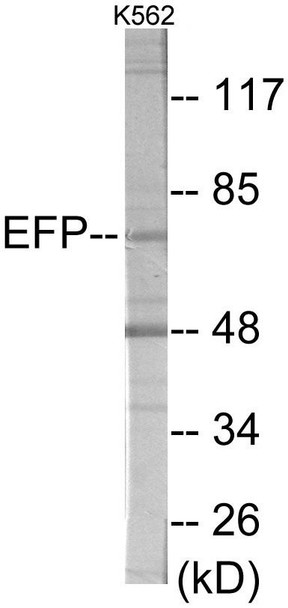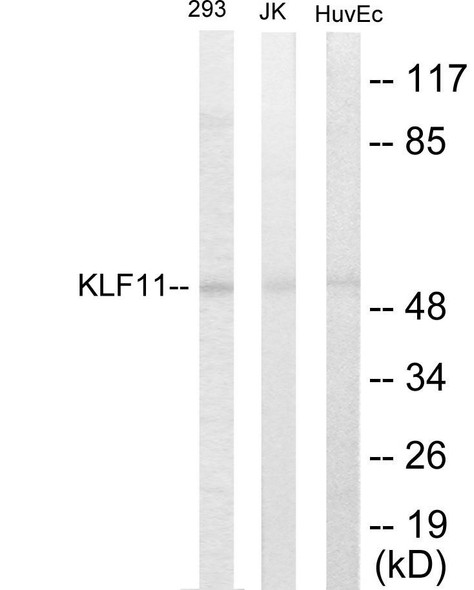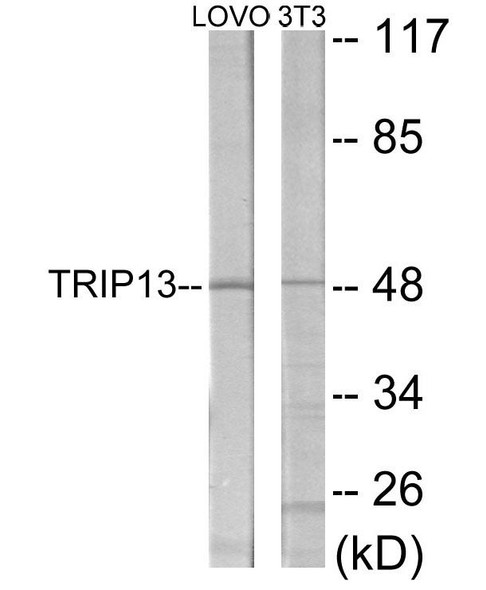Immunology
ZNF147 Colorimetric Cell-Based ELISA
- SKU:
- CBCAB01095
- Product Type:
- ELISA Kit
- ELISA Type:
- Cell Based
- Research Area:
- Immunology
- Reactivity:
- Human
- Detection Method:
- Colorimetric
Description
| Product Name: | ZNF147 Colorimetric Cell-Based ELISA |
| Product Code: | CBCAB01095 |
| ELISA Type: | Cell-Based |
| Target: | ZNF147 |
| Reactivity: | Human |
| Dynamic Range: | > 5000 Cells |
| Detection Method: | Colorimetric 450 nmStorage/Stability:4°C/6 Months |
| Format: | 96-Well Microplate |
The ZNF147 Colorimetric Cell-Based ELISA Kit is a convenient, lysate-free, high throughput and sensitive assay kit that can detect ZNF147 protein expression profile in cells. The kit can be used for measuring the relative amounts of ZNF147 in cultured cells as well as screening for the effects that various treatments, inhibitors (ie siRNA or chemicals), or activators have on ZNF147.
Qualitative determination of ZNF147 concentration is achieved by an indirect ELISA format. In essence, ZNF147 is captured by ZNF147-specific primary antibodies while the HRP-conjugated secondary antibodies bind the Fc region of the primary antibody. Through this binding, the HRP enzyme conjugated to the secondary antibody can catalyze a colorimetric reaction upon substrate addition. Due to the qualitative nature of the Cell-Based ELISA, multiple normalization methods are needed:
| 1. | A monoclonal antibody specific for human GAPDH is included to serve as an internal positive control in normalizing the target absorbance values. |
| 2. | Following the colorimetric measurement of HRP activity via substrate addition, the Crystal Violet whole-cell staining method may be used to determine cell density. After staining, the results can be analysed by normalizing the absorbance values to cell amounts, by which the plating difference can be adjusted. |
| Database Information: | Gene ID: 7706, UniProt ID: Q14258, OMIM: 600453, Unigene: Hs.528952 |
| Gene Symbol: | ZNF147 |
| Sub Type: | None |
| UniProt Protein Function: | TRIM25: a ubiquitous protein that mediates estrogen action in various target organs. Contains one RING-type zinc finger and one SPRY domain. |
| UniProt Protein Details: | Protein type:EC 6.3.2.19; Ubiquitin conjugating system; Transcription factor; Ubiquitin ligase; EC 6.3.2.n3; Ligase; Nuclear receptor co-regulator Chromosomal Location of Human Ortholog: 17q23.2 Cellular Component: nucleoplasm; cytoplasm; cytosol Molecular Function:protein binding; acid-amino acid ligase activity; zinc ion binding; transcription factor activity Biological Process: positive regulation of I-kappaB kinase/NF-kappaB cascade; viral reproduction; negative regulation of virion penetration into host cell; cytokine and chemokine mediated signaling pathway; protein ubiquitination; regulation of virion penetration into host cell; activation of NF-kappaB transcription factor; response to vitamin D; response to estrogen stimulus; innate immune response; positive regulation of transcription factor activity; defense response to virus; negative regulation of interferon type I production |
| NCBI Summary: | The protein encoded by this gene is a member of the tripartite motif (TRIM) family. The TRIM motif includes three zinc-binding domains, a RING, a B-box type 1 and a B-box type 2, and a coiled-coil region. The protein localizes to the cytoplasm. The presence of potential DNA-binding and dimerization-transactivation domains suggests that this protein may act as a transcription factor, similar to several other members of the TRIM family. Expression of the gene is upregulated in response to estrogen, and it is thought to mediate estrogen actions in breast cancer as a primary response gene. [provided by RefSeq, Jul 2008] |
| UniProt Code: | Q14258 |
| NCBI GenInfo Identifier: | 313104033 |
| NCBI Gene ID: | 7706 |
| NCBI Accession: | Q14258.2 |
| UniProt Related Accession: | Q14258 |
| Molecular Weight: | 630 |
| NCBI Full Name: | E3 ubiquitin/ISG15 ligase TRIM25 |
| NCBI Synonym Full Names: | tripartite motif containing 25 |
| NCBI Official Symbol: | TRIM25 |
| NCBI Official Synonym Symbols: | EFP; Z147; RNF147; ZNF147 |
| NCBI Protein Information: | E3 ubiquitin/ISG15 ligase TRIM25; RING finger protein 147; zinc finger protein-147; tripartite motif-containing 25; tripartite motif protein TRIM25; estrogen-responsive finger protein; tripartite motif-containing protein 25; ubiquitin/ISG15-conjugating enzyme TRIM25; zinc finger protein 147 (estrogen-responsive finger protein) |
| UniProt Protein Name: | E3 ubiquitin/ISG15 ligase TRIM25 |
| UniProt Synonym Protein Names: | Estrogen-responsive finger protein; RING finger protein 147; Tripartite motif-containing protein 25; Ubiquitin/ISG15-conjugating enzyme TRIM25; Zinc finger protein 147 |
| Protein Family: | E3 ubiquitin/ISG15 ligase |
| UniProt Gene Name: | TRIM25 |
| UniProt Entry Name: | TRI25_HUMAN |
| Component | Quantity |
| 96-Well Cell Culture Clear-Bottom Microplate | 2 plates |
| 10X TBS | 24 mL |
| Quenching Buffer | 24 mL |
| Blocking Buffer | 50 mL |
| 15X Wash Buffer | 50 mL |
| Primary Antibody Diluent | 12 mL |
| 100x Anti-Phospho Target Antibody | 60 µL |
| 100x Anti-Target Antibody | 60 µL |
| Anti-GAPDH Antibody | 60 µL |
| HRP-Conjugated Anti-Rabbit IgG Antibody | 12 mL |
| HRP-Conjugated Anti-Mouse IgG Antibody | 12 mL |
| SDS Solution | 12 mL |
| Stop Solution | 24 mL |
| Ready-to-Use Substrate | 12 mL |
| Crystal Violet Solution | 12 mL |
| Adhesive Plate Seals | 2 seals |
The following materials and/or equipment are NOT provided in this kit but are necessary to successfully conduct the experiment:
- Microplate reader able to measure absorbance at 450 nm and/or 595 nm for Crystal Violet Cell Staining (Optional)
- Micropipettes with capability of measuring volumes ranging from 1 µL to 1 ml
- 37% formaldehyde (Sigma Cat# F-8775) or formaldehyde from other sources
- Squirt bottle, manifold dispenser, multichannel pipette reservoir or automated microplate washer
- Graph paper or computer software capable of generating or displaying logarithmic functions
- Absorbent papers or vacuum aspirator
- Test tubes or microfuge tubes capable of storing ≥1 ml
- Poly-L-Lysine (Sigma Cat# P4832 for suspension cells)
- Orbital shaker (optional)
- Deionized or sterile water
*Note: Protocols are specific to each batch/lot. For the correct instructions please follow the protocol included in your kit.
| Step | Procedure |
| 1. | Seed 200 µL of 20,000 adherent cells in culture medium in each well of a 96-well plate. The plates included in the kit are sterile and treated for cell culture. For suspension cells and loosely attached cells, coat the plates with 100 µL of 10 µg/ml Poly-L-Lysine (not included) to each well of a 96-well plate for 30 minutes at 37°C prior to adding cells. |
| 2. | Incubate the cells for overnight at 37°C, 5% CO2. |
| 3. | Treat the cells as desired. |
| 4. | Remove the cell culture medium and rinse with 200 µL of 1x TBS, twice. |
| 5. | Fix the cells by incubating with 100 µL of Fixing Solution for 20 minutes at room temperature. The 4% formaldehyde is used for adherent cells and 8% formaldehyde is used for suspension cells and loosely attached cells. |
| 6. | Remove the Fixing Solution and wash the plate 3 times with 200 µL 1x Wash Buffer for five minutes each time with gentle shaking on the orbital shaker. The plate can be stored at 4°C for a week. |
| 7. | Add 100 µL of Quenching Buffer and incubate for 20 minutes at room temperature. |
| 8. | Wash the plate 3 times with 1x Wash Buffer for 5 minutes each time. |
| 9. | Add 200 µL of Blocking Buffer and incubate for 1 hour at room temperature. |
| 10. | Wash 3 times with 200 µL of 1x Wash Buffer for 5 minutes each time. |
| 11. | Add 50 µL of 1x primary antibodies (Anti-ZNF147 Antibody and/or Anti-GAPDH Antibody) to the corresponding wells, cover with Parafilm and incubate for 16 hours (overnight) at 4°C. If the target expression is known to be high, incubate for 2 hours at room temperature. |
| 12. | Wash 3 times with 200 µL of 1x Wash Buffer for 5 minutes each time. |
| 13. | Add 50 µL of 1x secondary antibodies (HRP-Conjugated AntiRabbit IgG Antibody or HRP-Conjugated Anti-Mouse IgG Antibody) to corresponding wells and incubate for 1.5 hours at room temperature. |
| 14. | Wash 3 times with 200 µL of 1x Wash Buffer for 5 minutes each time. |
| 15. | Add 50 µL of Ready-to-Use Substrate to each well and incubate for 30 minutes at room temperature in the dark. |
| 16. | Add 50 µL of Stop Solution to each well and read OD at 450 nm immediately using the microplate reader. |
(Additional Crystal Violet staining may be performed if desired – details of this may be found in the kit technical manual.)






